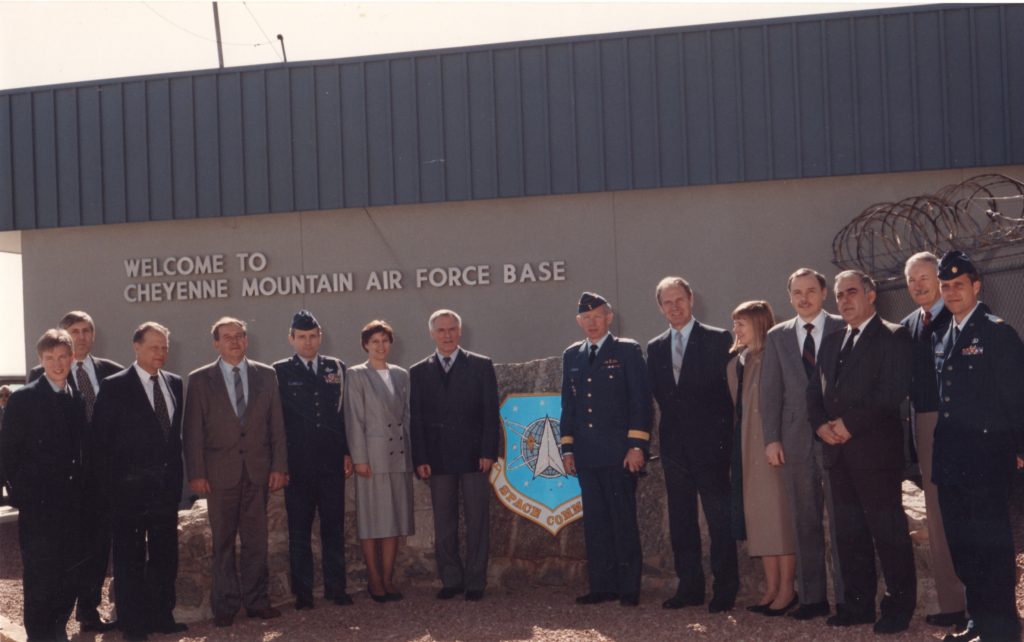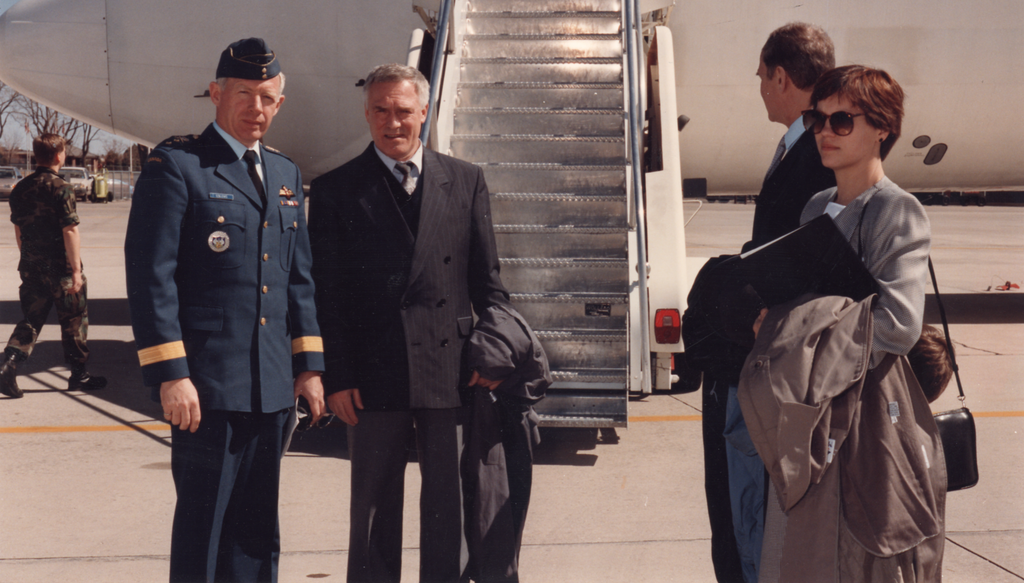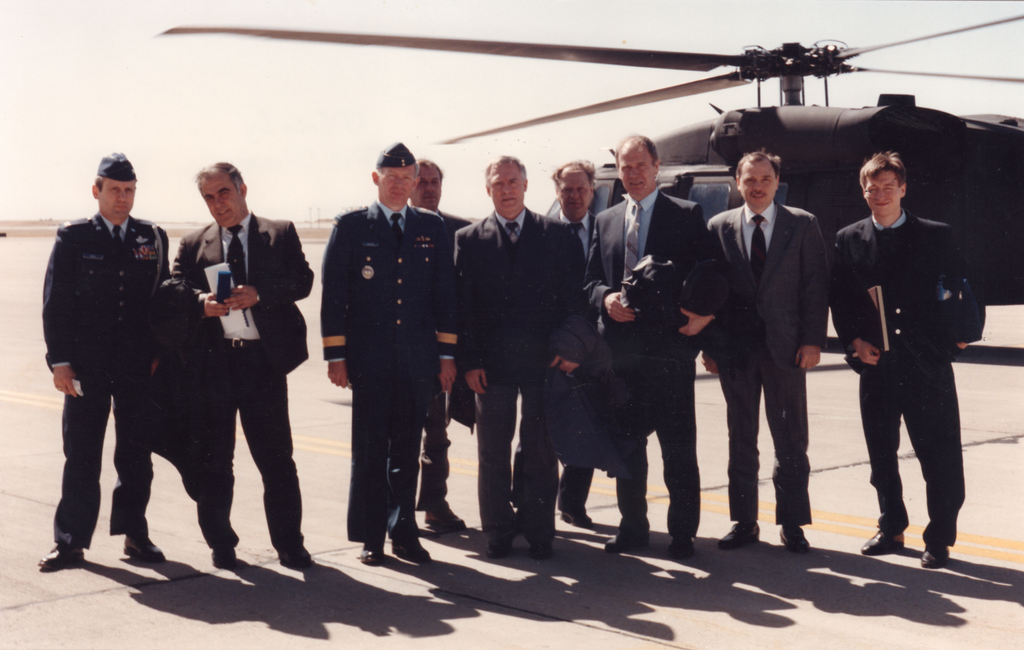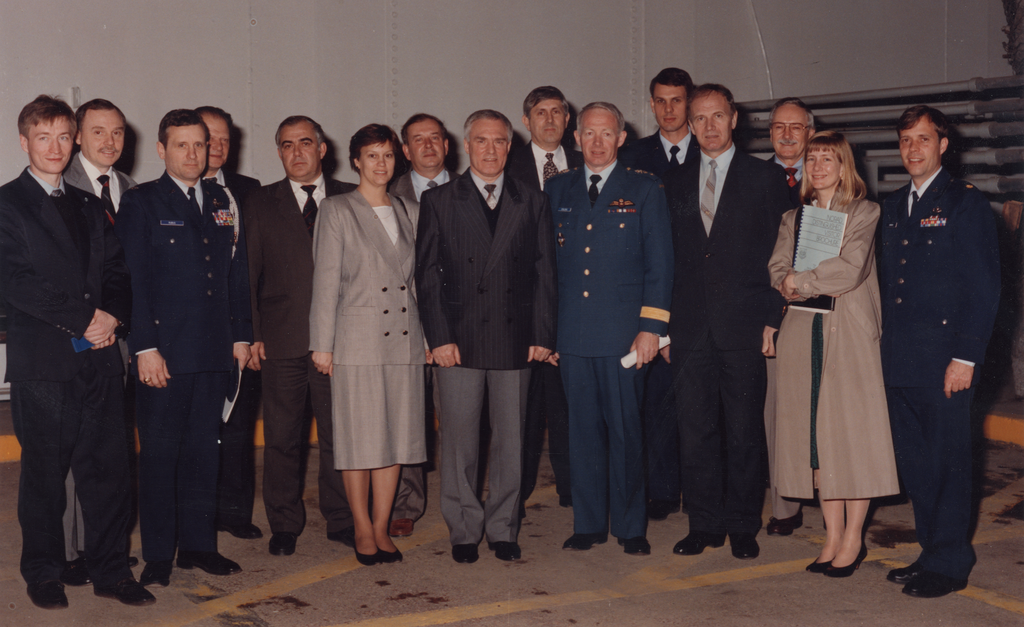I found myself on March 24th, 1993, inside the North American Aerospace Defense (NORAD) operations center located inside Cheyenne Mountain near Colorado Springs, Colorado, watching a briefing being given to Russian military dignitaries. I realized I was watching something historic unfold before my eyes. The Cold War had ended and the Soviet Union had collapsed. I was acting as a supporting officer for a visit to the US by the Russian Federation Air Force Chief of Staff, General-Colonel of Aviation Anatoliy Ivanovich Malyukov and other Russian generals who were receiving a presentation by the Deputy Commander of NORAD, Canadian Lieutenant-General Brian L. Smith. This event seems especially ironic now, given the current (2018) international climate and our deteriorating relationship with Russia.
How we came to give the head of the Russian Air Force a tour inside Cheyenne Mountain to include briefings on how we execute air defense in North America is an interesting story. It involves the advance of US commercial interests and efforts by the Clinton administration to help Russia develop its fledgling democracy.

In October of 1992, Mr. Frank Colson who was the Associate Deputy Assistant Secretary of the Air Force for Transportation and Federal Aviation as well as the Executive Director of the Department of Defense Policy Board on Federal Aviation (I assisted my boss who was a member of this board) met with two Russian Generals in Detroit, Michigan. The generals were there to witness the first civilian over-flight of the Russian Far East by Northwest Air Lines on a new route from Detroit to Japan. US airlines were very interested in this polar route because of the cost and time savings. During this meeting, many questions came up concerning the integration of civilian and military flight operations within US airspace. There was not enough time to go into much detail, so an invitation was extended to representatives of the Russian Air Force to visit the US and continue discussions.
In February, 1993, Secretary of State Warren Christopher sent a request to the US embassy in Moscow to invite a delegation of Russian military officers to visit the US for familiarization tours of US airspace management. Specifically, the US wanted to show the Russians, who were becoming more democratic, how our Air Force was able to operate in an airspace under the control of a civilian agency, the Federal Aviation Administration (FAA). The invitation was accepted.
The State Department arranged support from two US air carriers, Northwest and Delta Airlines, to provide transportation support for the Russians and from the Radio Technical Commission for Avionics (RTCA), a non-profit standards setting organization, for meal and lodging support. The visit was planned to last eight days with visits to Washington DC, Colorado Springs CO, Jacksonville FL, Panama City FL, Biloxi MS, and other locations. The purpose of the visit was to encourage the Russians to open their airspace to civilian over-flight and to buy air traffic control systems from US companies. The Department of Defense was interested in assisting this effort to help encourage the Russians to transfer control of their national airspace from the military to civilian.
Early in the morning on Wednesday, 24 March 1993, another major from my office and I met the Russian military delegation at the Double Tree Hotel in Washington DC. We rode with them in a step van to Andrews AFB, MD. Apparently, they had an entertaining night as I observed the hotel staff remove a large cardboard box filled with empty liquor bottles from their rooms. After arriving at Andrews, we boarded an Air Force C-135, which was used by Vice President Al Gore for official travel.

After an uneventful two hour flight, we landed at the airport in Colorado Springs, Co. We were met there by a flight of US Army Black Hawk helicopters which transported us to Cheyenne Mountain. This was the first and only time I had flown in a Blackhawk. It was a clear spring day in Colorado and as we neared Cheyenne Mountain, I looked down and saw that all the roads in the area had been blocked by police. We were met by the NORAD deputy commander, General Smith.

We passed through the heavily fortified blast doors of Cheyenne Mountain and entered the highly secure NORAD. Once inside, we began a tour of the facilities.

At the end of the tour, we entered a conference room connected to the operations center. Lt General Smith gave an unclassified briefing while we looked out onto the highly sanitized operations floor. I remember thinking to myself, the cold war was certainly over! After the tour, we flew back to the Colorado Springs airport aboard the Black Hawks that had brought us there. We boarded the C-135 to fly to the next stop of the day, Eglin AFB in the panhandle of Florida. However, we never made it there.
Not long after takeoff, the Russian delegation received word that the political climate back home was deteriorating quickly. The Russian president, Boris Yeltsin, was in a power struggle with the Russian parliament resulting in a constitutional crisis which was eventually resolved with military force, 1993 Russian Constitutional Crisis . The Russian delegation decided they needed to return home immediately.
The decision was made to re-route the flight to JFK airport in New York City immediately. A minor problem was securing an arrival slot into this busy airport. I had been given a cell phone for the trip (new technology at the time). I called back to the Pentagon and asked Mr. Colson’s military aide to contact the FAA for the request. The FAA responded quickly and we headed to the East Coast.
En-route to JFK, General Malyukov presented me and others with Russian Air Force pilot wings in appreciation of our contributions to their visit to the US. I have kept those wings as a cherished memento representing one of the most interesting days of my life. We landed at JFK uneventfully and said goodbye to our visiting dignitaries. We flew back to Andrews and I slept in my own bed that night.
